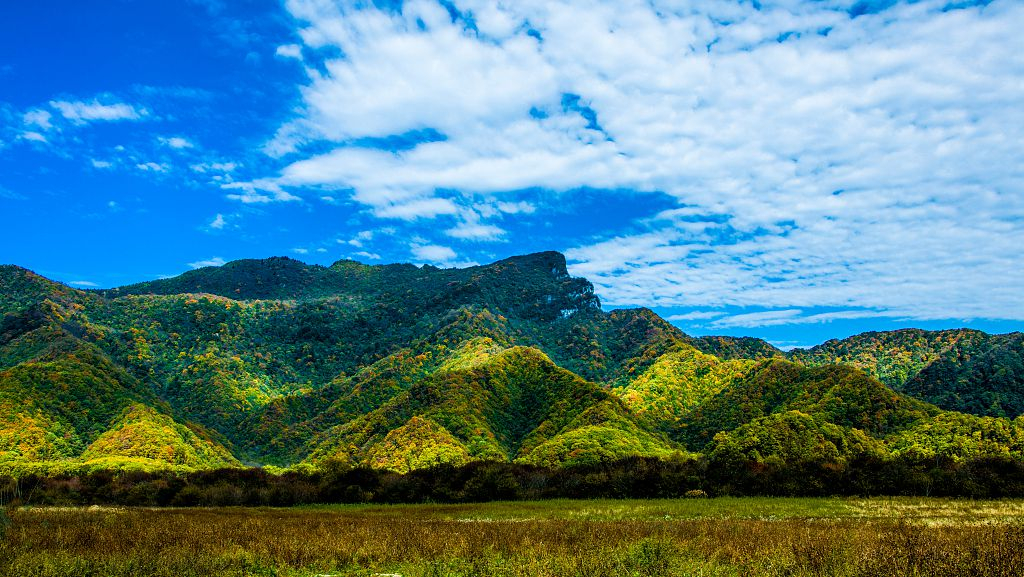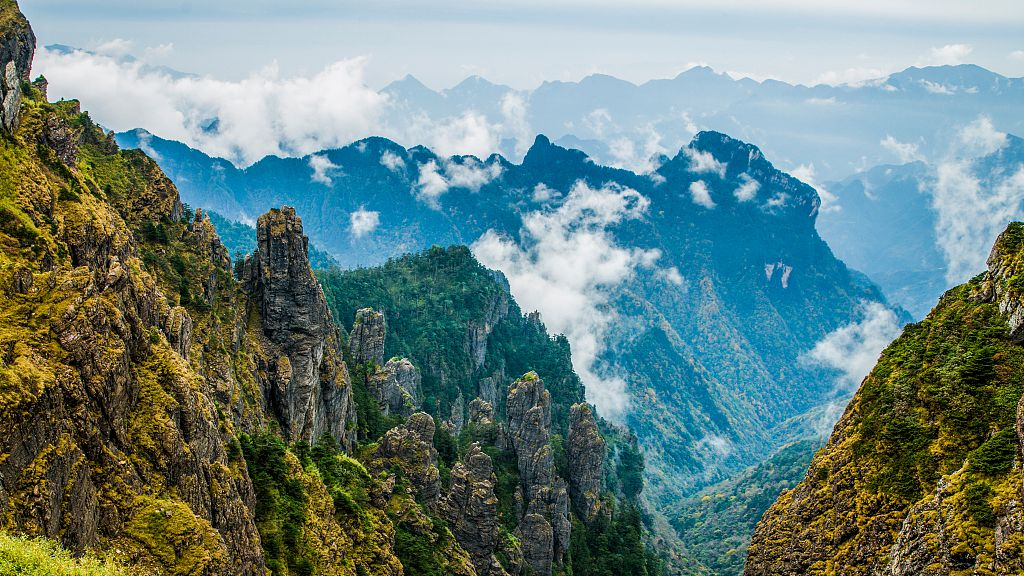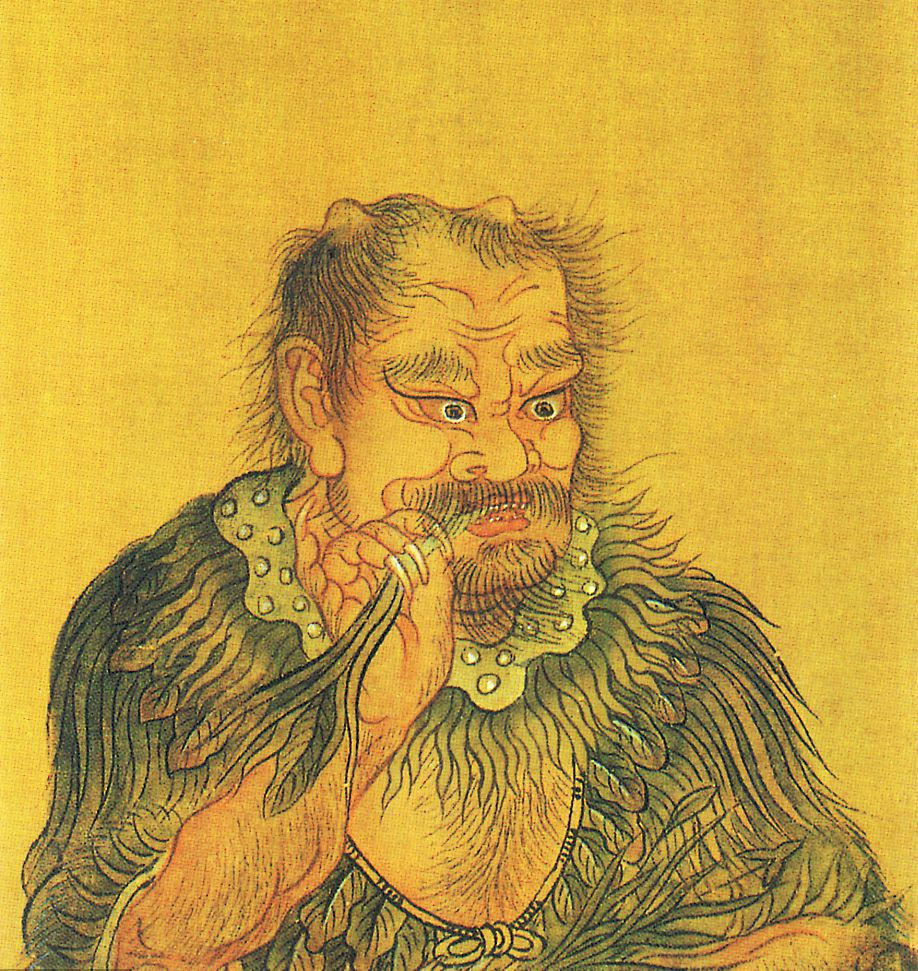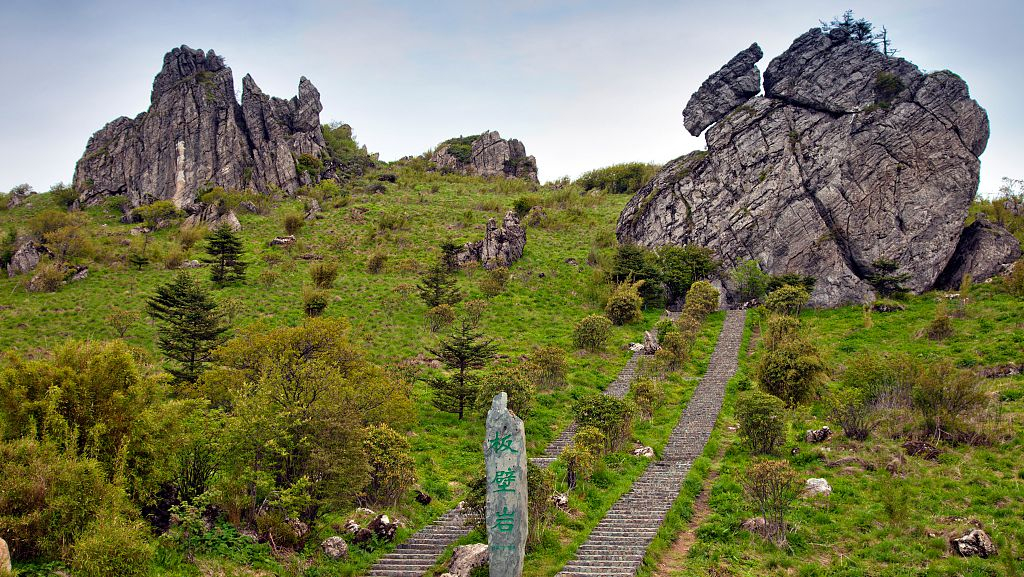
Destination
12:23, 16-Mar-2019
Mythical mountain: Shennongjia Forestry District
CGTN

The Shennongjia Forestry District in central China's Hubei Province is the only administrative zone in China with the word "forestry" in its name. It's not a misnomer.
The land is covered by vast primeval forest, nurturing countless species of plants and animals, as well as legends and stories that have been passed down through the ages. It was listed as a UNESCO World Heritage site in 2016.
Tourism development in the area takes a back seat to the wonders of nature. The natural environment has been largely left intact, allowing visitors the opportunity to appreciate untouched beauty. Mountains, lakes, stone pillars, trees and flowers create an uncommon yet harmonious landscape in the district's 3,253 square kilometers, which is slightly larger than the area of urban Shanghai.

The Shennongjia Forestry District in central China's Hubei Province /VCG Photo
The Shennongjia Forestry District in central China's Hubei Province /VCG Photo
Visitors to Shennongjia can base themselves in the town of Muyu, which is the nearest to all the scenic areas in the district.
For many people, a trip to Shennongjia is like paying pilgrimage to their national origin. The name of the district was adapted from Shennong, also known as the "Yan Emperor," one of the two legendary ancestors of the Chinese people. Shennong is believed to have been the inventor of agriculture and traditional Chinese medicine.
Legends have it that Shennong suffered so much seeing the sick and helpless that he vowed to find medicinal herbs to heal them all. At the site of today's Shennongjia district, he is said to have tried hundreds of types of herbs to gauge their effects. He was intoxicated many times, and tea was his only remedy.

Yan Emperor, a legendary ancient Chinese ruler in pre-dynastic times /VCG Photo
Yan Emperor, a legendary ancient Chinese ruler in pre-dynastic times /VCG Photo
It is believed that he wrote "The Classic of Herbal Medicine," or "Shennong Ben Cao Jing" – the earliest traditional Chinese medicine compilation – and finally died after eating toxic heartbreak grass.
The story of Shennong is mentioned in many ancient Chinese books, but there is no formal historical record to verify that he really existed. An altar to this legendary figure sits in Muyu, and the Shennongjia Museum of Natural History there commemorates this legend of traditional Chinese medicine.
The museum displays more than 2,000 breeds of plant species and 400-plus breeds of animal species, showcasing the natural assets of the district.
So what if you're not interested in medicinal herbs or mysterious apes and just want some sightseeing delights? Shennongjia provides an array of options.

Banbi Rock in Shennongjia Forestry District /VCG Photo
Banbi Rock in Shennongjia Forestry District /VCG Photo
Hikers who love challenges climb the Shennong Top, a pyramid-shaped peak that is considered as the "ridge of central China." The view from the 3,100-meter-high peak is stunning and often puts the clouds below your feet. Weather permitting, visitors can view the neighboring province from there.
But it needs determined effort to reach the top via 2,999 steps on a 1.5-kilometer-long stairway, which is called the "Stairway to Qingyun." The word "qingyun" means "high clouds" in China, which aptly describes the setting.
The climb might be boring if it weren't for the panoply of different views along the stairway - a sea of bamboo, a stone forest and a plateau meadow filled with flowers and greenery.
If you don't feel like wearing out your legs, the Dajiu Lakes Wetland at the northwestern corner of Shennongjia is an ideal outing.

Dajiu Lakes /VCG Photo
Dajiu Lakes /VCG Photo
Dajiu Lakes, which means "nine large lakes," sits near the juncture of the provinces of Hubei and Sichuan and the city of Chongqing. The lakes are surrounded by mountains, and the scenery there is quite different from the mountain views. The lakes and the meadows surrounding them exude a sense of tranquility.
Plank walkways allow visitors to reach the middle of some of the lakes. Visitors often comment on how it feels like stepping into a painting, with blue skies, white clouds and greenery reflected in the crystal-clear lake waters. Black and white swans add that final perfect touch.
Early dawn is said to be the best time to enjoy the view in the wetland. The rising sun casting a golden hue across the waters and the morning mist create an impressionist painting.
But only early birds get to enjoy the beauty. The wetland is about two hours' ride from Muyu. The best time to catch the sunrise, according to local people, is before seven a.m.
Good to know:
Shanghai has direct flights to the city of Yichang in Hubei Province. From there, visitors can take a bus to the town of Muyu from the Yichang Long Distance Bus Station. In Muyu, there are buses going to many of the scenic areas in Shengnongjia. For places are not connected by bus, visitors are advised to book a taxi and negotiate the price with the cabbie. The usual taxi fare ranges from 100 yuan (14.86 U.S. dollars) to 150 yuan (22.28 U.S. dollars) per day.
The admission to the Shengnongjia Forest District is 299 yuan (44.42 U.S. dollars) per person.
Source(s): Shanghai Daily

SITEMAP
Copyright © 2018 CGTN. Beijing ICP prepared NO.16065310-3
Copyright © 2018 CGTN. Beijing ICP prepared NO.16065310-3